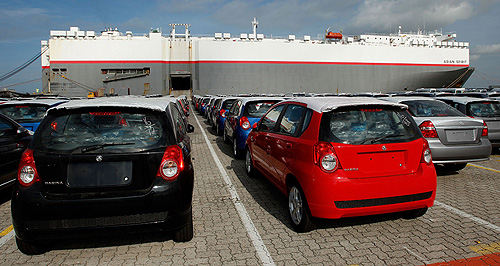Dump vehicle tariffs, say motoring clubs
BY RON HAMMERTON | 12th Feb 2014

But the Federal Government has reacted coolly to the proposal which reportedly would cost Canberra’s coffers an estimated $1 billion in lost income and hasten the decline of the three manufacturers ahead of their announced demise by late 2017.
Industry minister Ian Macfarlane told ABC radio that it would look at the issue, but added: “Let’s realise that this transition isn’t one that’s going to take place overnight.” AAA chief executive Andrew McKellar said that because all three Australian car-makers had announced plans to shut their local factories, the five per cent tariff on imported new vehicles should be dropped to improve motoring affordability.
“If tariffs were designed to help protect the local industry then there is no longer any justification to maintain them,” he said.
“The removal of tariffs could save the average new car buyer between one and two thousand dollars on the cost of a vehicle.
“The government must use the upcoming federal budget to announce the end of vehicle import tariffs in order to improve motoring affordability.” The AAA is a national body representing motor organisations such as the RACV, NRMA and RACQ.
Asked about the proposal on ABC radio, Mr Macfarlane indicated the federal government would look at the issue in due course.
"Toyota have guaranteed that they will maintain their production at their Altona plant until 2017 we have the time to get this right and to step through it," he said.
Of the 1,039,471 vehicles sold in Australia last year, 932,749 were imported, leaving the Australia car-makers with about 10 per cent of the market.
However, a large slice of those imports do not attract the five per cent tariff, as they come from countries with free-trade agreements with Australia.
For example, Thailand – the second largest source of cars and trucks sold in Australia after Japan – accounted for 208,593 units, while the United States exported 32,372 vehicles to this country.
If about 690,000 vehicles incur the tariff, with an average payment of about $1500, the loss to Canberra would be about $1.03 billion.
However, the tariff also inflates other federal imposts by raising the landed cost of vehicles, with GST and the luxury car tax increasing by proportion.
Meanwhile, Mr Macfarlane reportedly has asked the Productivity Commission to refocus its motor manufacturing industry inquiry on to the parts supply industry to keep as much of the industry afloat as possible in the wake of the decisions by Holden, Ford and Toyota to all quit local manufacturing by the end of 2017.
"There are some very world class component suppliers, both to Toyota and of course to Ford and Holden, but also who are already exporting," Mr MacFarlane told the ABC.
"So we need to see what we need to do to position them to be able to continue that export and to grow the component obviously of export to 100 per cent."